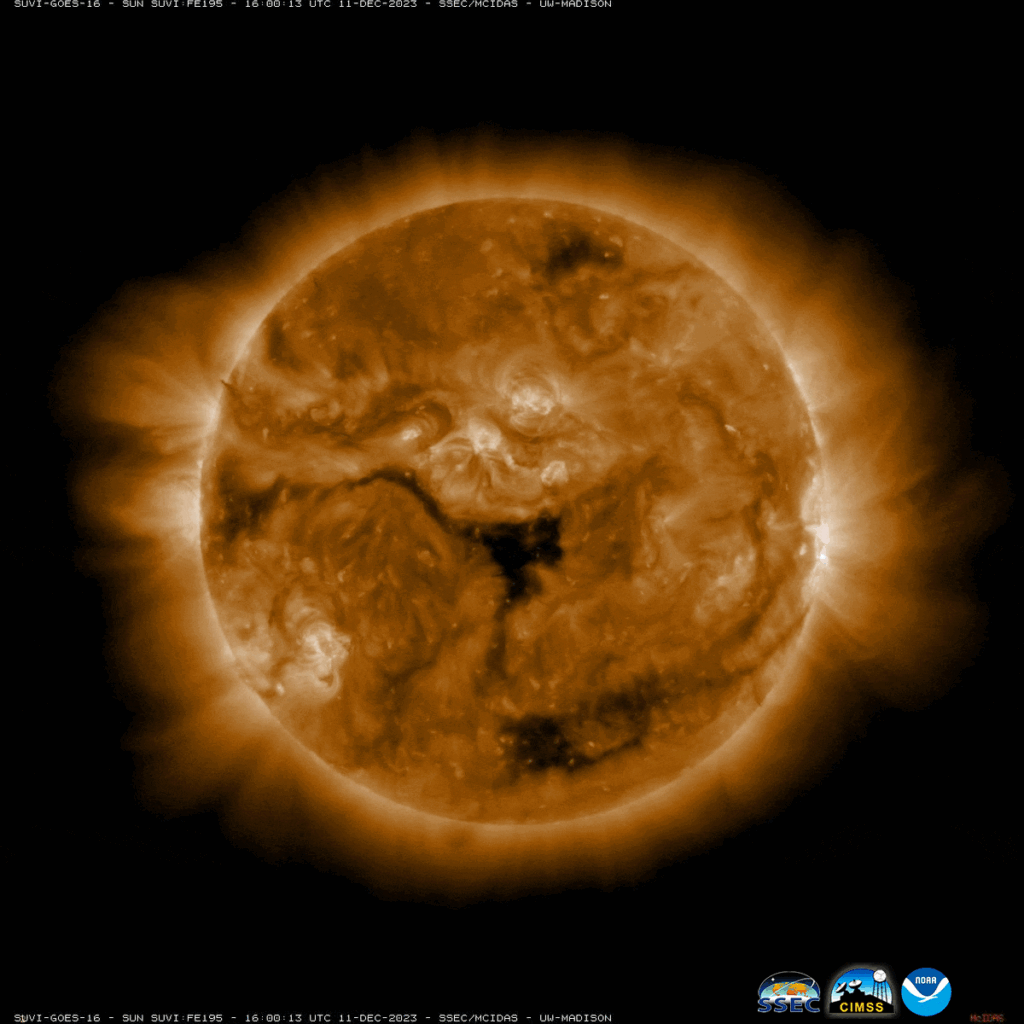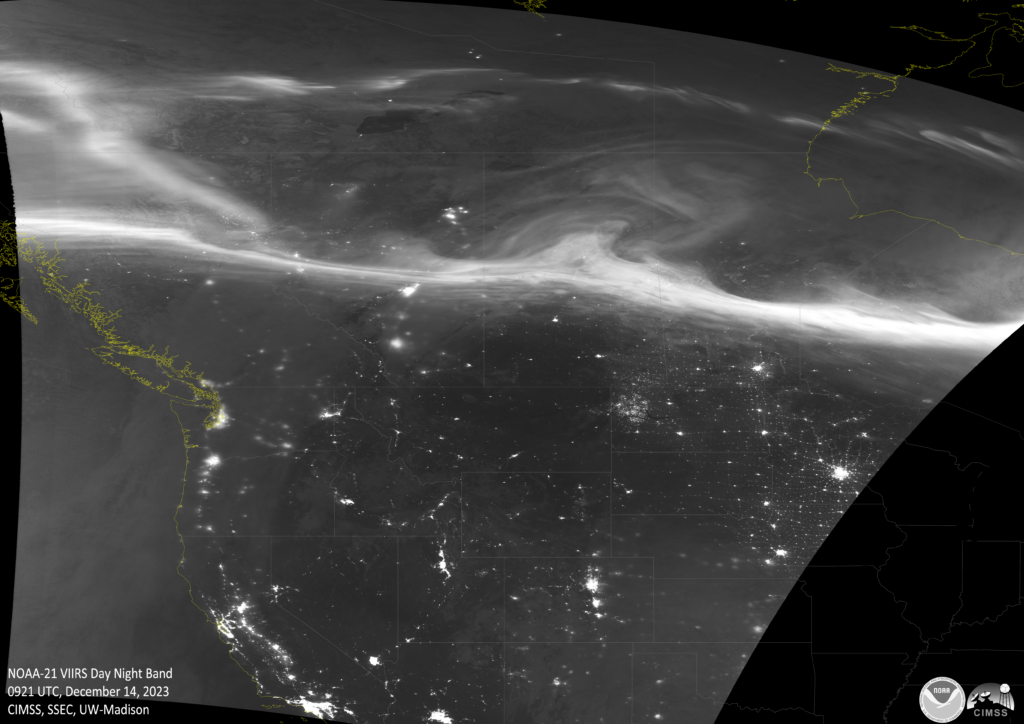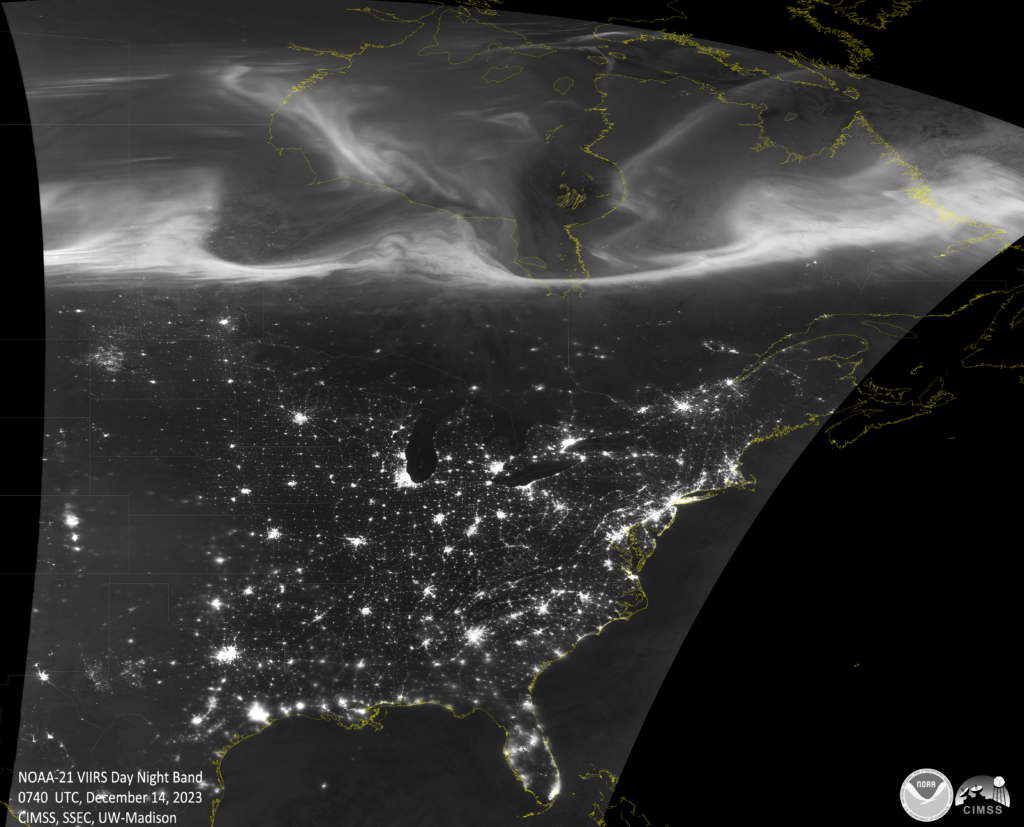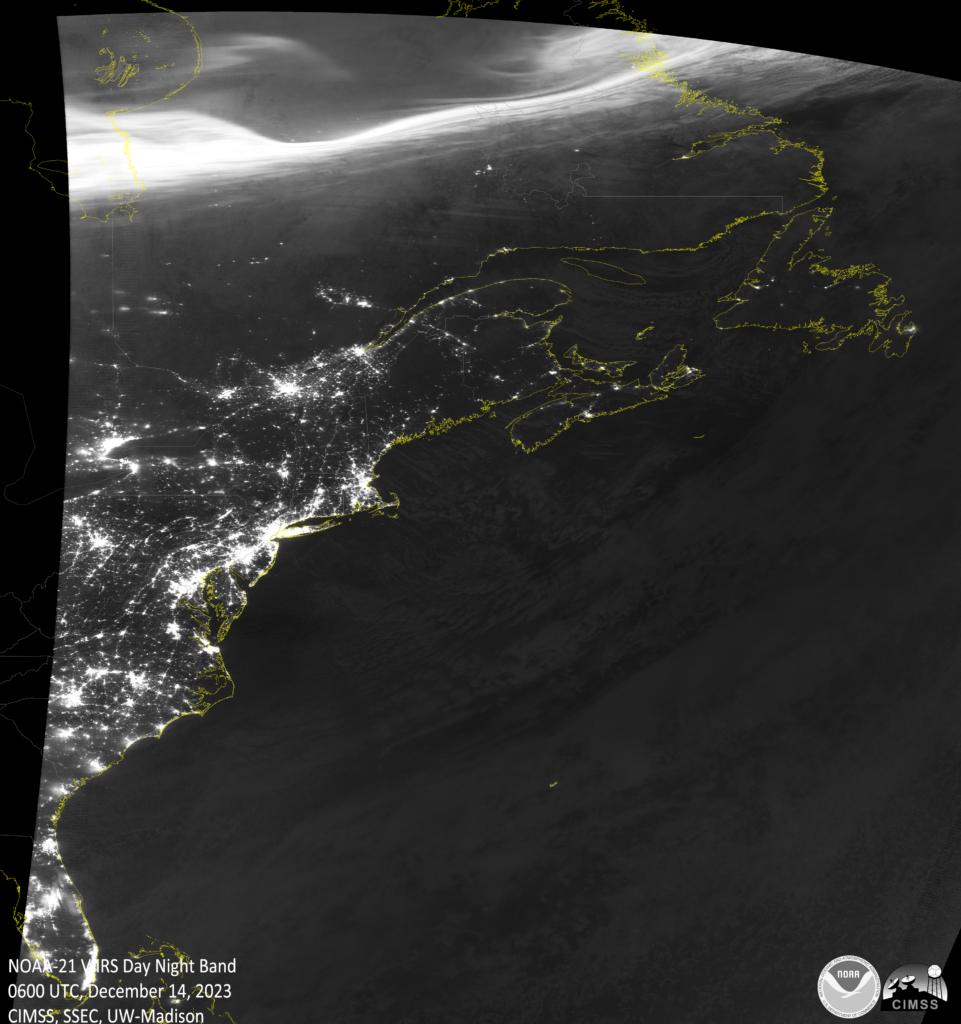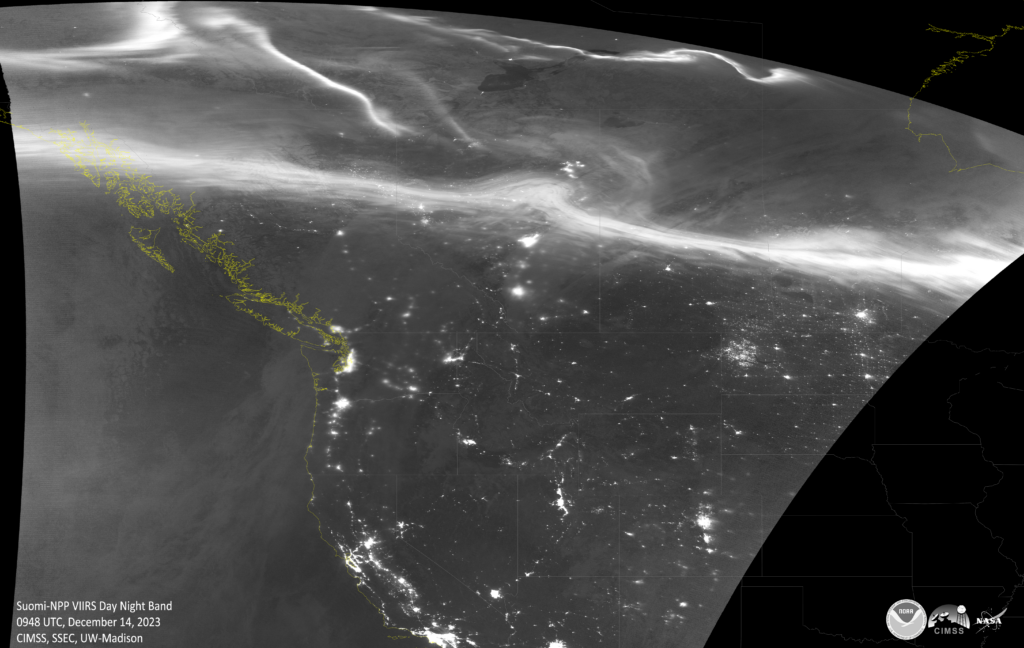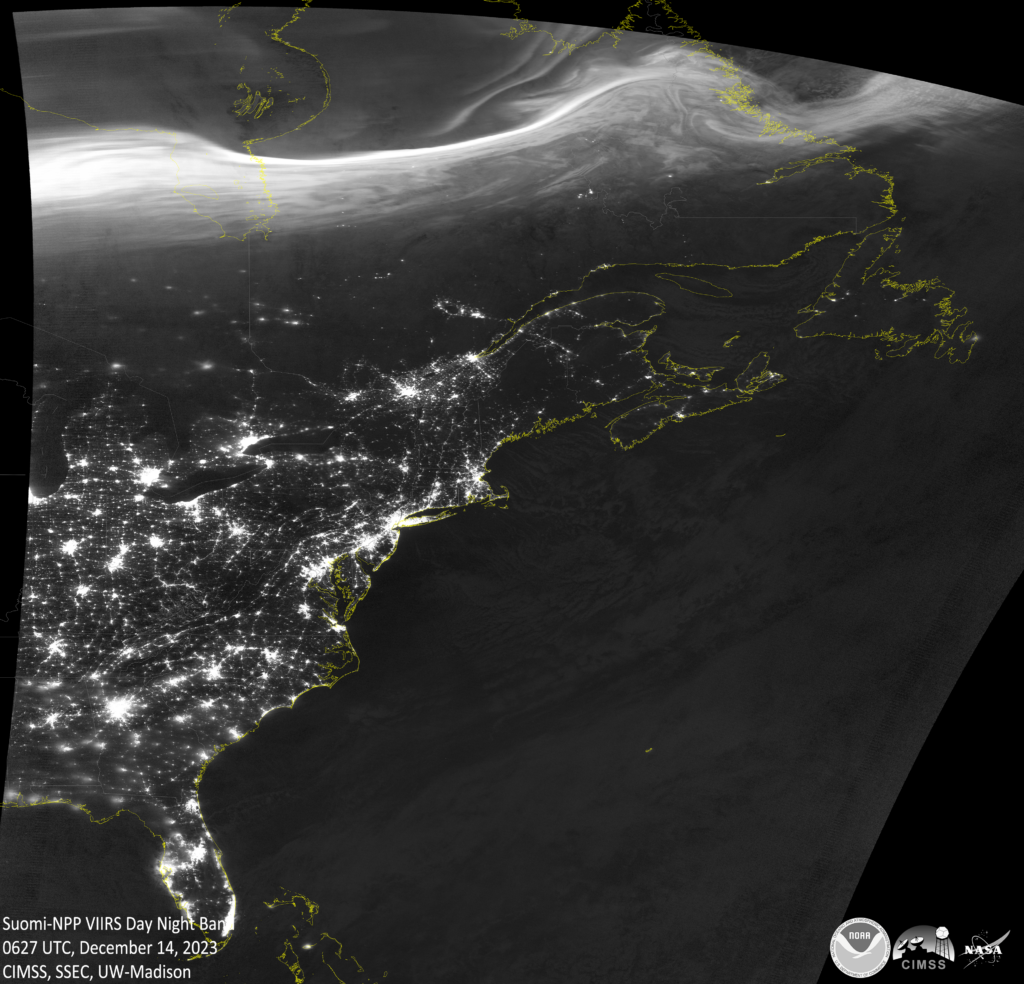Solar Wind reaches Earth
The Solar Ultraviolet Imager (SUVI) on GOES satellites revealed an equatorial coronal hole directed towards Earth on the 11th and 12th of December.
Coronal holes appear as dark areas in the extreme ultraviolet, or the 195 Angstroms band on SUVI. They appear dark because they are cooler and less dense regions of plasma with open unipolar magnetic fields.
Coronal holes typically result in high-speed solar wind streaming outward, and in this case, directly towards Earth. This scenario sometimes prompts NOAA Space Weather to issue a Geomagnetic Storm Watch, but almost always results in vibrant Aurora Borealis activity when the solar wind reaches Earth. This was the case in the early hours on the 14th of December, revealed by the VIIRS Day Night Band sensor flying on NOAA’s polar-orbiting satellites.
The following 3 images were acquired by the NOAA-21 satellite:
These 3 images were acquired by the NOAA-20 satellite:
Three images were also acquired by the Suomi-NPP satellite:


